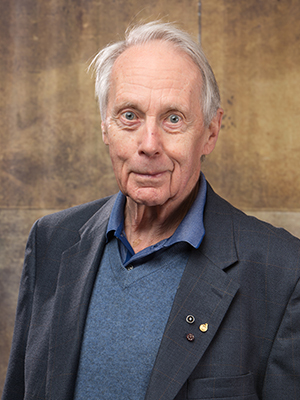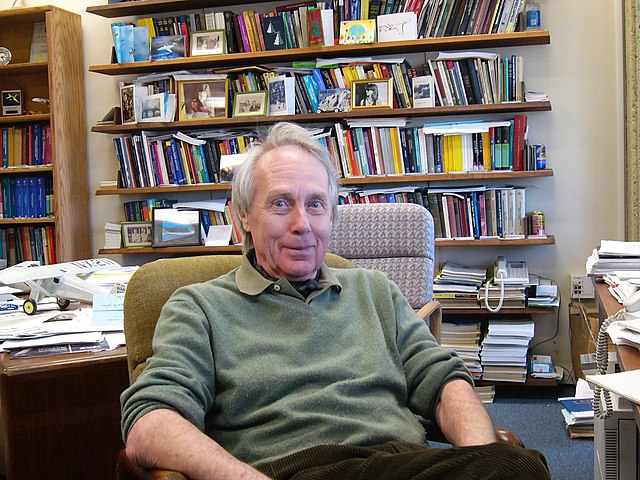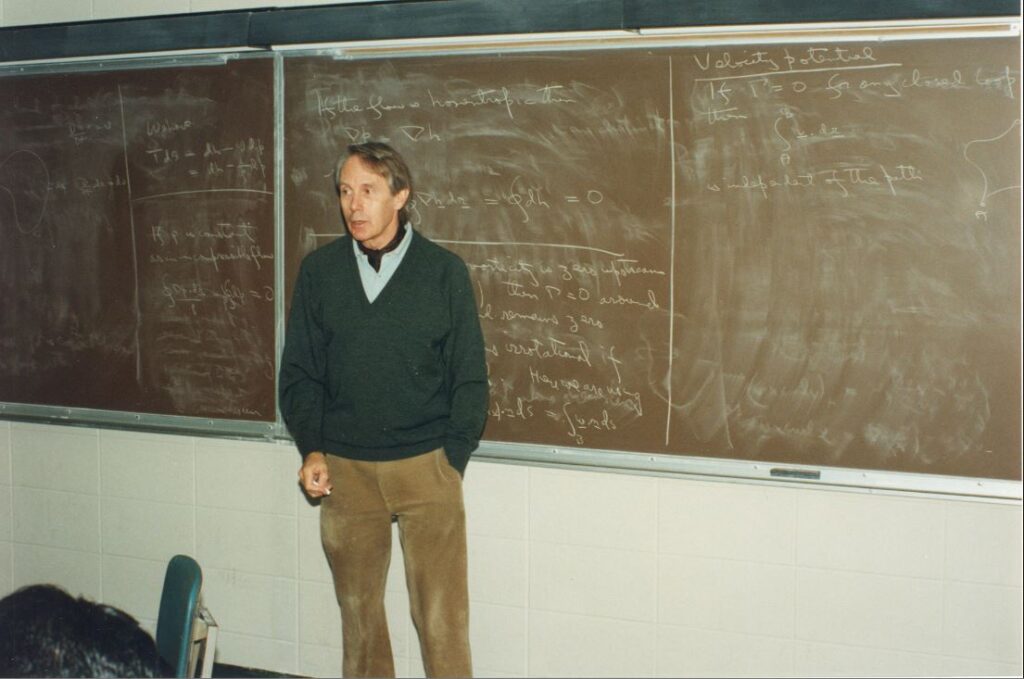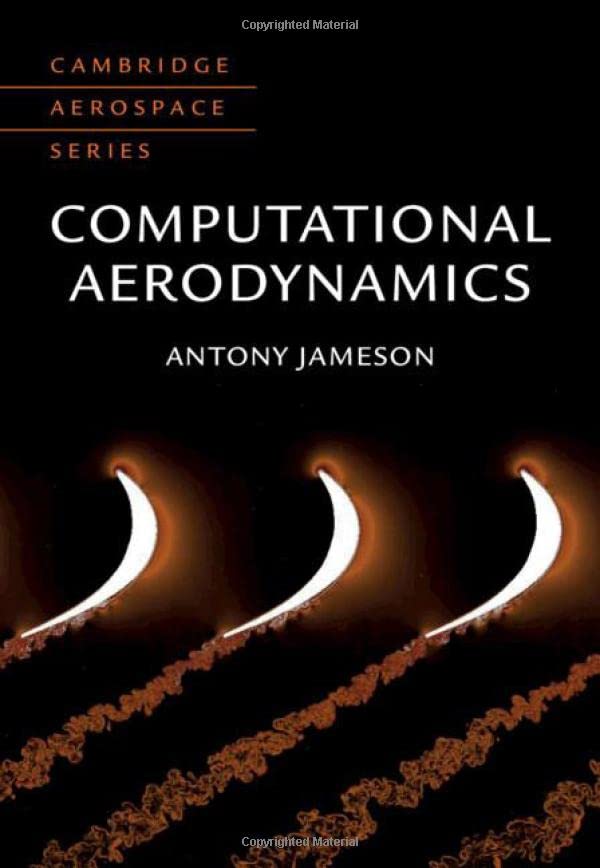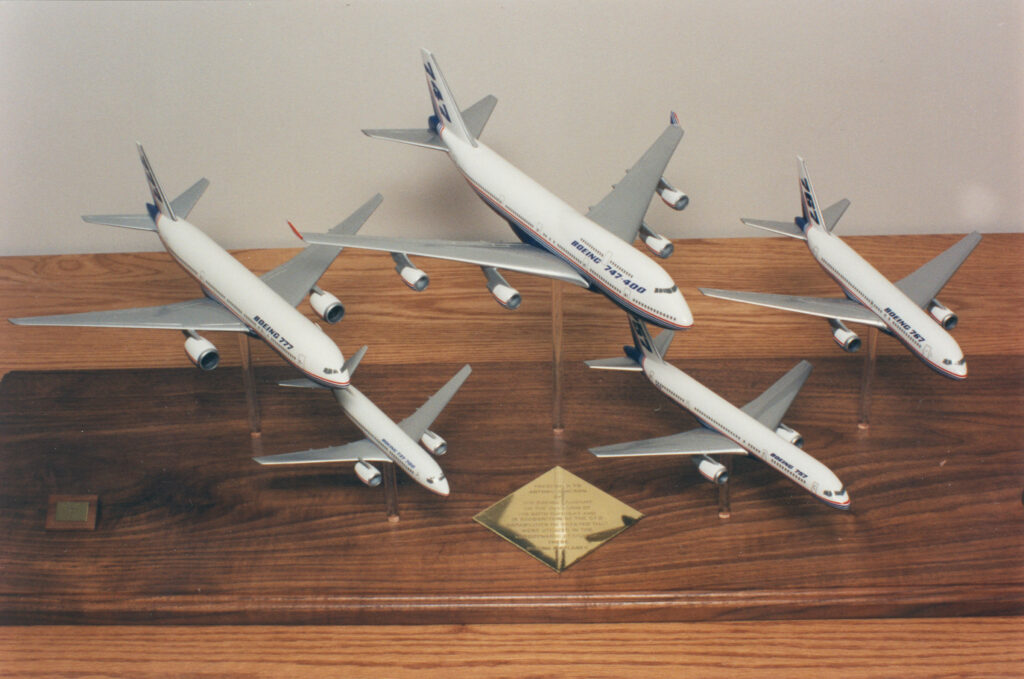Pioneer in Aerodynamics and Computational Fluid Dynamics , his exceptional contributions to algorithmic innovation and the development of computational fluid dynamic codes that have made important contributions to aircraft design.The Boeing 767, 757, 747-400, 777, 737-700 and the 787 Dreamliner have all have been designed using aerodynamic codes based on CFD methods devised by Prof.
Jameson.
His methods have also been used by the European aerospace industry. And we haven’t space to list all of the numerous McDonnell-Douglas aircraft, as well as many regional and business jets, whose aerodynamic design also benefited from his CFD expertise.
Antony Jameson (born 20 November 1934 ) began using computational methods in aerodynamic design in 1970, at the age of 36, as an employee of the Grumman Aerospace Corporation in New York – which he joined in 1966. Previously he had been working at Grumman, but on control theory for stability augmentation systems; his experience in this field proved of considerable utility some two decades on, when he redirected his research into aerodynamic shape optimisation (about which more is said later). Prior to Grumman he had been chief mathematician at Hawker Siddeley Dynamics in Coventry.
Jameson is a graduate of Cambridge University, Trinity Hall, 1958, with 1st class honours in engineering, where he stayed to gain his PhD in magnetohydrodynamics, followed by a period as a Research Fellow at Trinity Hall.
His first job on leaving Cambridge in 1964 was actually as an economist with the UK Trades Union Congress. Jameson lists Len Murray, former Head of the TUC Economics Department and later General Secretary, as being one of several significant people in his life. Earlier, he had served as a lieutenant in the British Army, Malaya.
Clearly, Jameson had wide-ranging experience before he focused on CFD in his midthirties. It was then that he wrote his first two CFD codes: FLO 1 and SYN 1 . These programs solved for idealised fluid flow (non-viscous and irrotational) over 2-D airfoils, with FLO 1 calculating the pressure distribution for a given airfoil, and SYN 1 calculating the inverse problem, i.e. the shape of an airfoil given a target pressure
distribution. As computer memory was very limited, Jameson ensured that the memory requirements were small. These codes also ran fast, taking between 5 and 10 minutes. The efficiency of Jameson’s codes is characteristic of his work.
The author of 444 scientific papers, Antony Jameson has made major contributions to many fields of aerospace science and technology, especially to the areas of computational fluid dynamics (CFD), control theory, and aerodynamics. In the words of the International Journal of CFD (November 2005): “Antony Jameson has had a huge impact on the field of Computational Fluid Dynamics for over four decades, opening up new avenues of research and developing tools to solve problems once thought beyond reach. From the formulation of a problem, to the development of the numerical technology to solve it, to the implementation of that technology in efficient tools and the fluid dynamical interpretation of results, Jameson has impacted most aspects of CFD.” Jameson is also credited with major breakthroughs in the area of aerodynamic shape optimization, showing how CFD and control theory can be combined to allow designers to calculate optimum wing shapes which minimize drag and maximize performance.
Jameson incorporated his numerical algorithms in two series of CFD codes: “FLO” (for flow analysis) and “SYN,” (for aerodynamic design) and both have played critical roles in developing some of the world’s most well-known jetliners, including Airbus’ 320 and 330, as well as Boeing’s 737-500, 737-700, 747-400, and the 777. His work has advanced the state of CFD, with some noting that “many of the advances were propelled by the understanding, the algorithm technology, and the codes that were created by Jameson.”
Aircraft manufacturers have universally used his codes for their CFD needs. NASA also used the codes in their Supersonic Transport Program, and a derivative of the codes was used by the Alinghi America’s Cup team to predict the performance of their winning yacht. Using SYN107, Jameson collaborated with Dr. Robert Mills in the systematic application of shape optimization to design the wing of the Gulfstream G650, which has set new standards of speed and range for business jets. This work was recently recognized with an award from the British Royal Aeronautical Society.
Antony Jameson is a lifetime member and Fellow of AIAA, a Fellow of the British Royal Society, the Royal Aeronautical Society, and the Royal Academy of Engineering. He is also a Foreign Associate of the National Academy of Engineering. Currently a full-time Research Professor in the Department of Aeronautics & Astronautics at Stanford University, he was formerly James S. McDonnell Distinguished University Professor of Aerospace Engineering at Princeton University from 1982 to 1997 and Thomas V. Jones Professor of Engineering at Stanford from 1997 through 2014.
Jameson’s numerous past honors include the 1988 British Royal Aeronautical Society’s
Gold Medal, the 1993 AIAA Fluid Dynamics Award, the 1995 ASME Spirit of St. Louis Medal,
the 2006 Elmer A. Sperry Award, the 2015 USACM Von Neumann medal and the 2015 AIAA
Pendray Aerospace Literature Award.
Guy Antony Jameson, FRS, FREng (born 20 November 1934, Gillingham, Kent) is Professor in the Department of Aerospace Engineering at Texas A&M University. Jameson is known for his pioneering work in the field of computational fluid dynamics. He has published more than 300 scientific papers (authored or co-authored) in a wide range of areas including computational fluid dynamics, aerodynamics, and control theory.
Jameson was elected a member of the National Academy of Engineering in 1997 for contributions to aircraft through the development of computational fluid dynamics. He was awarded the 2005 Elmer A. Sperry Award and received the 2015 AIAA/ASME/SAE/AHS Daniel Guggenheim Medal for lifetime achievement. He is an Honorary Fellow of the AIAA.
Computational fluid dynamics method
During his career, Professor Jameson has devised a variety of new schemes for solving the Euler and Navier-Stokes equations for inviscid and viscous compressible flows. For example, he devised a multigrid-scheme for the solution of steady flow problems and the dual time stepping scheme for unsteady flows.
Jameson also wrote the FLO and SYN series of computer programs which have been widely used in the aircraft industry.
The computation of transonic flow over airfoils soon became his main focus, and in 1972 Jameson moved to the Courant Institute of Mathematical Sciences, New York University, to further pursue this topic. In transonic flow the Mach number is a little below unity in most parts of the flow field, i.e. the flow is mostly subsonic. However, locally it becomes supersonic. This is a crucial flow regime for commercial aircraft, as cruising speed needs to be high to give good range, but when locally supersonic flow occurs on a wing it
can potentially lead to strong shock waves that give large increases in drag. Large commercial aircraft typically operate at a Mach number of about 0.8, which is in the transonic regime, so their wing shape needs to be designed to minimise the strength of any shocks and ideally to avoid them altogether. Jameson provides an overview of the wider challenges and constraints in airfoil design.
At the Courant Institute, Jameson wrote a CFD code for the prediction of idealised transonic flow past swept wings, known as FLO 22, in collaboration with David Caughey. FLO 22 was very robust, with convergence all but guaranteed. The code was immediately put to use by McDonnell-Douglas and others. FLO 22 is a remarkable code, as it has been run continuously since it was written, and is still in use today.
The methodology in FLO 22 was extended in FLO 27 and FLO 28 to be applicable to arbitrary meshes, so that geometries such as complete wing-bodies could readily be computed. Boeing evaluated the extended code in 1978 and subsequently incorporated it in their own ‘A488’ software – which was the main computational tool used in wing analysis for the Boeing 757, 767 and 777 aircraft.
In 1980, Jameson joined Princeton University and from 1982 was the James S. McDonnell Distinguished University Professor of Aerospace Engineering. He moved to Stanford University in 1997,
where he continues to research, teach and publish, as the Thomas V. Jones Professor of Engineering in the Department of Aeronautics and Astronautics. Advances in computer hardware during the 1980s meant that it became possible to solve the Euler equations for flow over airfoils. This removes the restriction of irrotationality imposed by idealised fluid flow. It heralded a major step forward in
aerodynamic design, especially for transonic flows, as shock strength and in particular shock location can be in error with idealised flow models. Jameson2 worked with collaborators at Dornier and the University of Tel Aviv to devise a groundbreaking 3-D Euler code, known as FLO 57, which allowed shocks to be
predicted accurately for complex aerodynamic shapes .
Jameson made numerous other advances in numerical methods and algorithms throughout the 1980s, including the use of unstructured meshes to allow the very first computation of flow over a complete aircraft. This breakthrough was achieved using a new code developed jointly by Jameson, Timothy Baker and Nigel Weatherill, in 1985, called ‘Airplane’, which was adopted as the basis of aerodynamic codes used by McDonnell Douglas, NASA, Mitsubishi and EADS.
Together with his development of software for unstructured meshes, Jameson continued to work on improving the speed of solution algorithms, as well as the accuracy and robustness of discretisation schemes. In essence, he worked across all of the areas that were important in furthering CFD as a tool for
aerodynamic design. As he brought these methods to maturity, he redirected his research towards the challenge of finding the optimal shape of aerodynamic designs to meet performance targets, subject to
a range of constraints, such as wing thickness which determines structural weights. His work in
this field is based on a merging of control theory and CFD.
This led to a new series of ‘SYN’ codes, such as SYN 87 and 88 for optimal wing design solving the Euler equations and, in 1997, SYN 107* solving the full Navier-Stokes equations that govern viscous fluid flows. In 2003 he wrote the code ‘Synplane’, allowing the optimisation of aerodynamic design for a complete aircraft. As an example, SYN 107 can handle several thousand design variables, and was used for the aerodynamic design of the Gulfstream G650 business jet which entered service this year and has a range of 6000 nautical miles at its high cruise speed of Mach 0.9.
Jameson’s work on aerodynamic shape optimisation is as important as that of his earlier research on CFD methods and algorithms.
Awards
In 1980 he received the NASA Medal for Exceptional Scientific Achievement in recognition of his earlier work on transonic potential flow. In 1988 he received the Gold Medal of the British Royal Aeronautical Society for his outstanding contribution to the development of methods for the calculation of transonic flow over real aircraft configurations. In 1991 he was elected a Fellow of the American Institute of Aeronautics and Astronautics, and he was also elected an Honorary Fellow of Trinity Hall, Cambridge. In 1993, he was selected to receive the American Institute of Aeronautics and Astronautics Fluid Dynamics Award in recognition of numerous contributions to computational fluid dynamics and the development of many widely used computer programs which have immeasurably improved the capability to analyse and understand complex flows. In 1995 he was elected a Fellow of the Royal Society of London for Improving Natural Knowledge. In 1995, he was selected by ASME to receive The Spirit of St. Louis Medal for numerous outstanding contributions to computational fluid dynamics and the development of many widely used computer programs that have immeasurably improved understanding of complex flow fields and become a dominant tool for aerodynamic design. In 1996 he was selected to receive the Theodorsen Lectureship Award from ICASE/NASA, Langley. In 1997 he was elected as a Foreign Associate to the National Academy of Engineering. In 2001 he received the degree Docteur Honoris Causa from the University of Paris, and in 2002 he received the degree Docteur Honoris Causa from Uppsala University. In 2006 he received the Elmer A. Sperry Award. In 2005, he was elected as a Fellow of the Royal Academy of Engineering. In 2015, he won one of the highest honours presented for a lifetime of achievement in aeronautics: the Daniel Guggenheim Medal.

